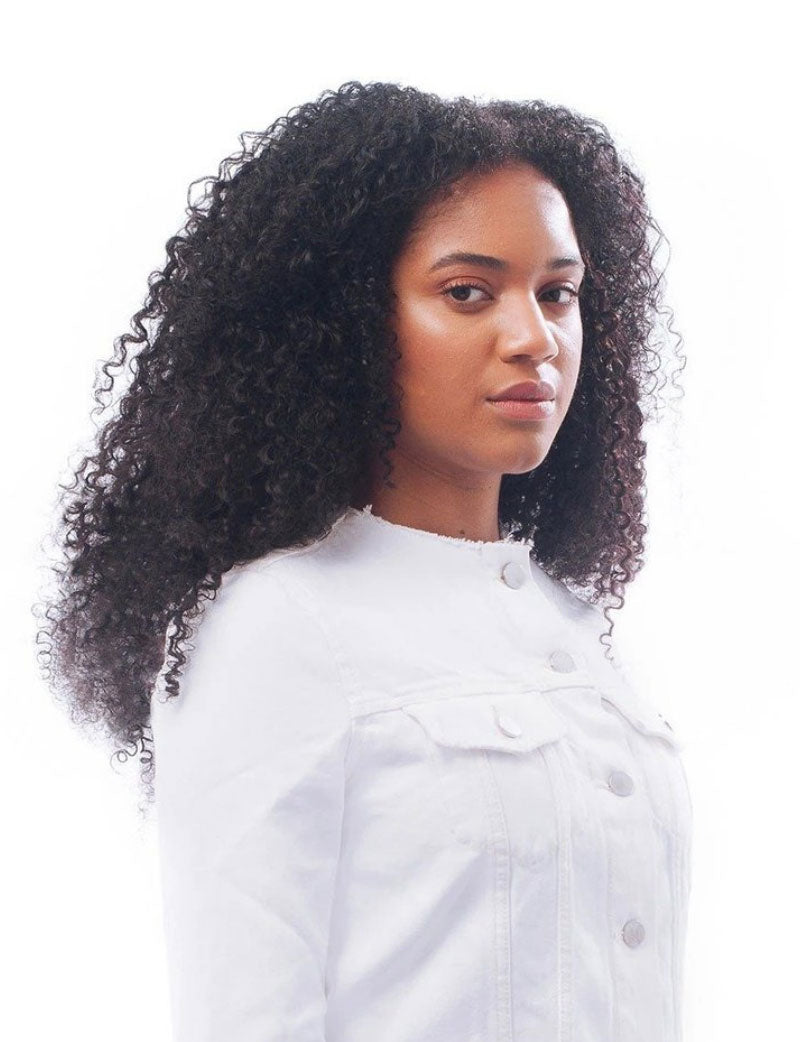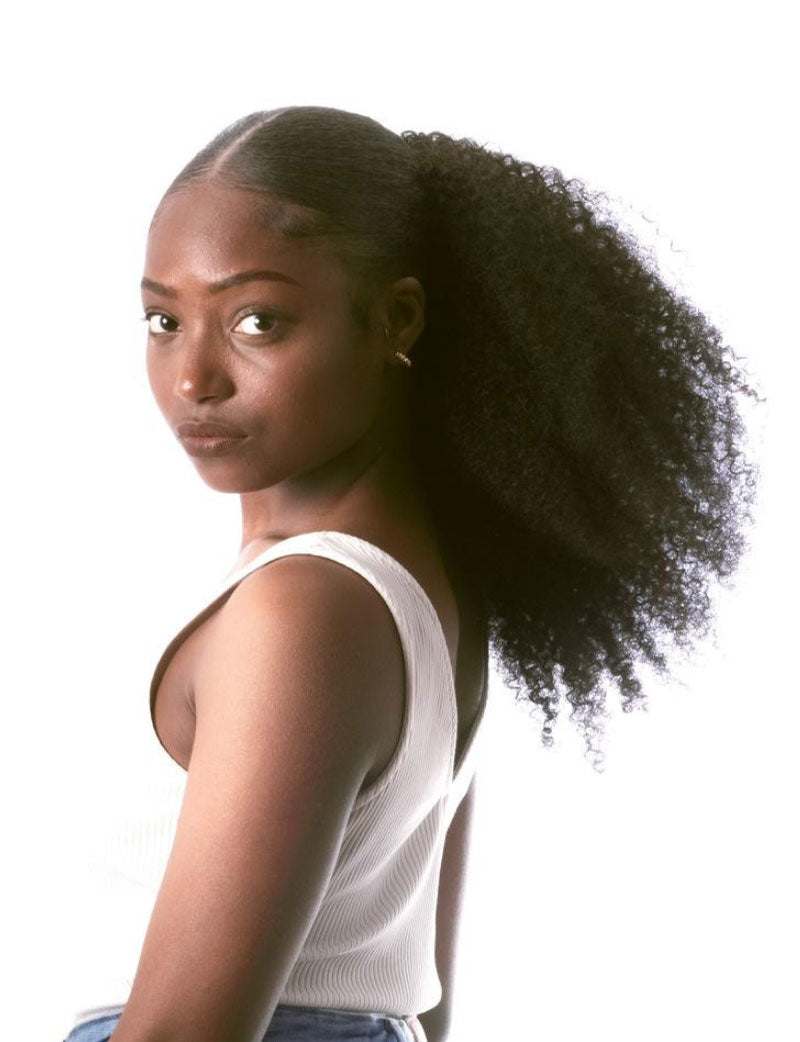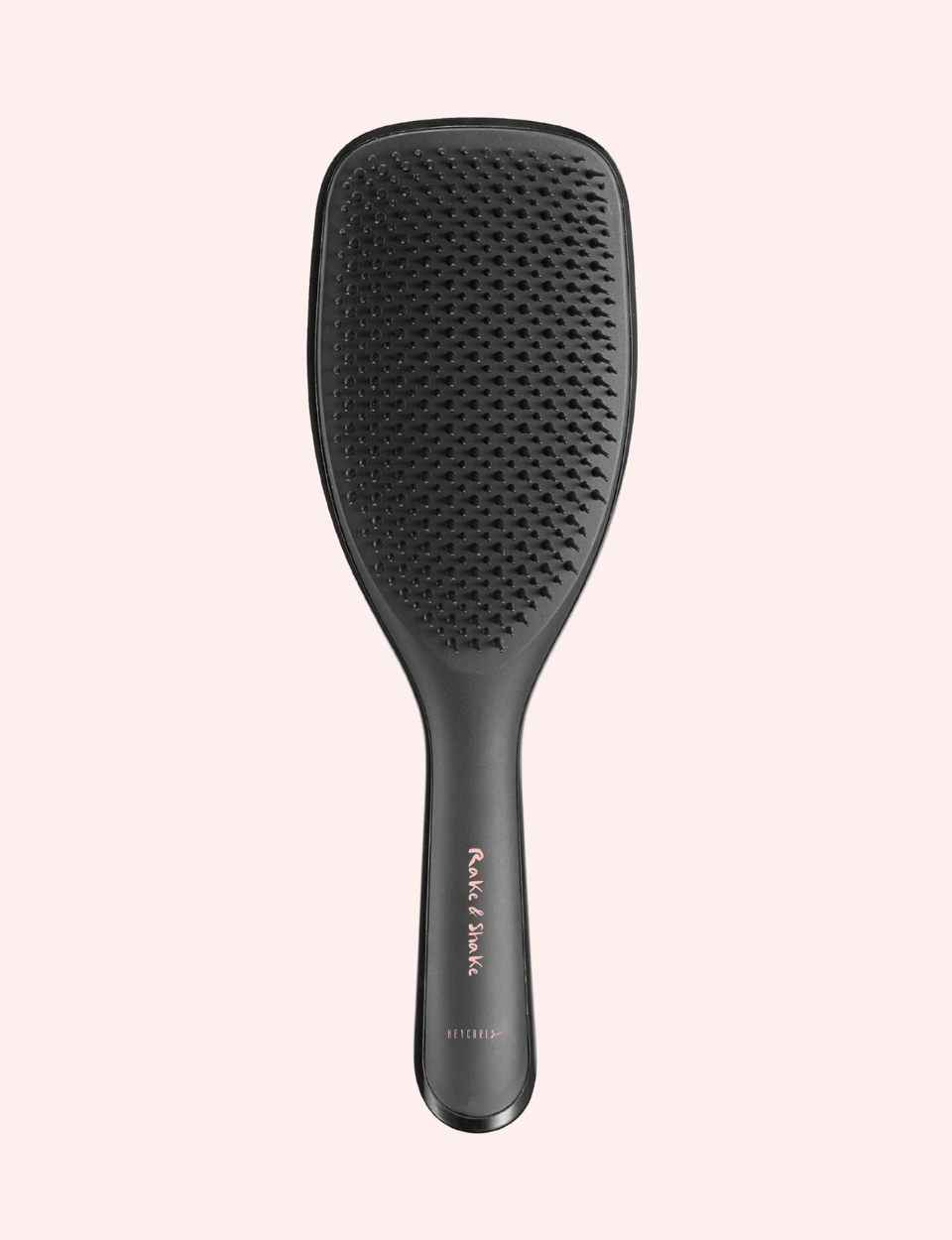What does your nighttime routine look like?
For many, it involves a pampering face mask, a five-step skincare routine complete with serums and oils, and meditation before bed. But what about your natural hair? If you have afro, coily, or kinky hair, you’ve likely experienced the gloom of waking up to frizzy, unmanageable coils that need to be wrestled with to look presentable.

But just like your skin needs a healthy nighttime routine to repair and restore itself overnight for a fresh new day, so does your natural hair. And without taking the time to properly care for your hair the night before, you can bet your curly bottom that you’ll wake up in the morning with dry, matted, or messy curls.
This article will teach you how to care for your natural hair overnight, including protective hairstyles to try and a couple of simple habits to add to your nighttime hair routine so you can wake up in the morning with gorgeous, frizz-free natural curls.
What’s the best way to put your hair when you sleep?
The secret to preserving your coils overnight lies in protective hairstyles. It will depend on what type of natural hair you have; the thickness of your hair, tightness of your coils, your natural hair texture, and when your last wash day was will all play a part in figuring out which protective hairstyle works best for you. We’ve listed a few below, so be sure to scroll down.
How can I sleep without frizzing my hair?
Natural hair is prone to frizz overnight not only because it is naturally dry, but because of the friction caused by rubbing on rough pillowcases all night. Cotton pillowcases have rough fibers that cause pulling and snagging at curls, as well as absorb moisture that dries out natural hair even more. In order to sleep on natural hair without frizzing, you’ll need to take a couple of steps to moisturize and seal in moisture while you sleep, as well as reduce the amount of friction your hair strands are under—especially if you tend to toss and turn at night.
Use silk or satin fabrics
Silk and satin have smooth surfaces with little friction so curls can glide easily over them without pulling while you snooze. They also have moisture wicking properties so that natural hair stays hydrated through the night.

The main difference between silk and satin is how they are made: silk is a natural fiber while satin is made from a polyester weave. Due to this, satin will usually be cheaper than silk. While it’s always best to go for the real thing, both will have similar effects on your natural hair.
Applying a hair oil before bed
As previously mentioned, natural hair is prone to dryness, and while you sleep, your curls rub on your pillowcase, releasing moisture. Do your hair a favour and apply your favourite hair oil on your ends before wearing a satin bonnet or putting your hair in a protective hairstyle. This will allow your curls to retain moisture overnight.
Use a loose scrunchie
The goal here is to preserve your curls as much as possible overnight. When wearing any protective hairstyles, be sure to use a loose scrunchie and to avoid double tying it to reduce pressure on your roots as well as avoid kinks in your freshly washed curls.
By the way, we know some of these tips may not be the most comfortable to sleep on—especially if you have thick, textured afro hair—but we promise, it will be worth it when you can finally stop fighting with your natural hair every morning!
How to sleep with natural hair
- Sleep with a satin bonnet
- Try the pineapple or multi-pineapple method
- Use flexi rods
- Sleep on a satin pillowcase
- Sleep with a low ponytail (or two)
- Try two-strand twists
- Put your hair in bantu knots
1. Sleep with a silk or satin bonnet
This is one of the most tried and true methods for women with natural hair. As mentioned before, one of the reasons natural hair frizzes overnight is because of the friction caused by leaving undone coily hair to matt and tangle on rough cotton pillowcases all night as you move around.

A satin bonnet holds your curls and coils in place overnight, to reduce any rubbing of the hair cuticle, keeping frizz at bay. If you don’t have a satin bonnet on hand, wrapping your curls in a satin or silk scarf will do the trick as well.
2. Try the pineapple or multi-pineapple method
This is another method that’s popular among women with natural hair. It involves gathering all your hair at the top of your head (like a pineapple!) and tying a satin scarf around the bottom to hold everything in place. This ensures that you don’t sleep directly on your precious coils, flattening them overnight. Again, using satin is key, as this fabric glides over textured hair easily without breakage and frizz-causing friction.

If you have short, natural hair, you may not be able to gather all of it up into one pineapple. Not to worry! Simply gather your curls into sections and create three to five smaller pineapples. Just try to make the pineapples as high as possible on your head to avoid sleeping on them and smashing your curls at night.
3. Use flexi rods
If you want sexy spiral coils in the morning, flexi rods are the way to go, and are slightly more comfortable than sleeping on rollers. Simply section out your hair according to how large you’d like your spirals, then attach the flexi rods to each section. Wake up, give your curls a shake, and be on your way!

4. Sleep on a silk or satin pillowcase
Similar to a satin bonnet, a satin pillowcase is ideal for natural hair as it does not pull on the hair while you sleep, like cotton or other synthetic fibres. If your satin bonnet or silk scarf falls off at night, you’ll have the added protection of your pillowcase to keep your coils at bay. If that’s not enough to make you purchase one, here’s another tip: a satin pillowcase helps keep your facial skin healthy and prevent wrinkles over time!

5. Put your hair in a low ponytail (or two)
If you’re a side-sleeper, a low ponytail is a great protective hairstyle to avoid smashing your natural curls while you sleep. Remove any bangs and some hair from the side and top of your head, then pull the rest of it into a low ponytail with a large scrunchie. Don’t double wrap the scrunchie and leave it slightly loose to reduce tension on the roots and avoid creating a kink overnight. Then, wear a silk bonnet over everything and lay down to rest.

If you tend to sleep on your back and a low ponytail is uncomfortable, try creating two low ponytails on either side of your head with the same method so you can lay down on your back comfortably.
6. Try two-stranded twists
This can be done on dry or wet hair and leads to lovely, non-poofy afro in the morning. Section your hair into ten to 15 sections, then take each section and divide that into two. Wrap each section around each other and twist until about an inch or two from the bottom and finger coil the ends of your hair. As always, throw a silk bonnet on top of everything to keep your coils protected.

7. Put your hair in bantu knots
If you’re looking for tighter curls, bantu knots have been a staple for African women with natural hair for years! Section off your hair into about ten sections, then twist and wrap the sections on themselves until they coil into a tiny bun. Secure each knot with a hair tie.
How to revive natural hair in the morning
So, you’ve followed all our instructions at night and it’s time to face the day. Although our tips will certainly help preserve your natural hair, you may find that your curls need a little touch up in the morning. Here’s what to do:
Apply a tiny bit of hair oil on any loose hairs before undoing any twists or protective hairstyles to lock in moisture and reduce frizz. If your hair was in a pineapple or low ponytail, gently undo your scrunchie and apply a tiny bit of styling cream on your curls and gently shake them out. Try to avoid running your fingers through your hair or touching them too much, or you may end up with frizz.
Once your curls are settled, you can use a pick to add volume to your roots, then finger twist any loose hairs or spirals that look out of place.
And that’s it! By following these simple tips, you can say goodbye to frizzy natural hair in the morning. If you have coily hair, learn more about how to take care of 4c hair.







